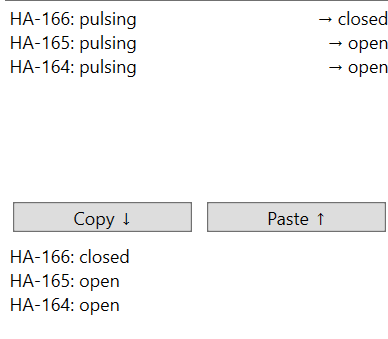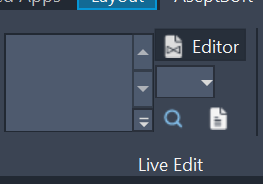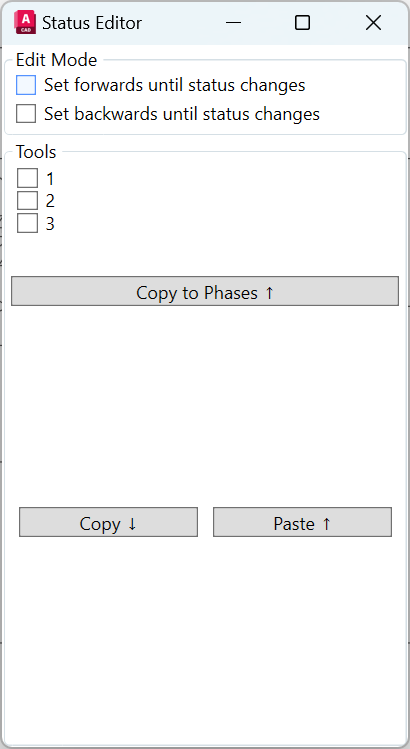Status Editor
Advances State changes to easier the Process Design can be found using the Status Editor Window.
Locate this window in the Module Ribbon
The status editor has three features:
Edit Mode

Enables AseptSoft to automatically copy the State updates of the current Engineering Item within nearby Phases based on the following logics:
The two options are:
Set forwards until status changes
Set backwards until status changes
They have the very same effect, but they advance in opposite directions in the sequence of Phases.
Set forwards until status changes will apply the same state the user is applying using the Live edit panel from the Module Ribbon as long as that Engineering Item in each consecutive phase has the same old State.
Assume there are 4 valves: VP-1, VP-2, VP-3, and VP-4, and we have 5 Phases. We can visualise the Status table as:
1 | 2 (active) | 3 | 4 | 5 | |
|---|---|---|---|---|---|
VP-1 | open | closed | closed | open | closed |
VP-2 | closed | closed | closed | closed | open |
VP-3 | open | open | closed | open | open |
VP-4 | closed | closed | closed | open | open |
We select VP-1, VP-2, and VP-3 in Phase 2 to apply the State “pulsing” (see selected in blue in the table above).
Without using the functionalities of the Edit Mode, the table will be updates as:
1 | 2 (active) | 3 | 4 | 5 | |
|---|---|---|---|---|---|
VP-1 | open | pulsing | closed | open | closed |
VP-2 | closed | pulsing | closed | closed | open |
VP-3 | open | pulsing | closed | open | open |
VP-4 | closed | closed | closed | open | open |
However, based on the choice of Edit Modes, we will produce the following reactions:
Set forwards only

1 | 2 (active) | 3 | 4 | 5 | |
|---|---|---|---|---|---|
VP-1 | open | pulsing | pulsing | open | closed |
VP-2 | closed | pulsing | pulsing | pulsing | open |
VP-3 | open | pulsing | closed | open | open |
VP-4 | closed | closed | closed | open | open |
Observations:
VP-1 is affected in Phase 3 as well, as it had the same “closed” state in phases 2 and 3.
VP-2 is affected in Phase 3 and 4 as well, as it had the same “closed” state in phases 2, 3 and 4.
VP-3 is only affected in Phase 2, and in no other phase, as in phase 3 it has the “open” state, which is different from the “closed” state as in phase 2.
Set backwards only

1 | 2 (active) | 3 | 4 | 5 | |
|---|---|---|---|---|---|
VP-1 | open | pulsing | closed | open | closed |
VP-2 | pulsing | pulsing | closed | closed | open |
VP-3 | pulsing | pulsing | closed | open | open |
VP-4 | closed | closed | closed | open | open |
Observations:
VP-1 is only affected in Phase 2, and in no other phase, as in phase 1 it has the “open” state, which is different from the “closed” state as in phase 2.
VP-2 is affected in Phase 1 as well, as it had the same “closed” state in phases 2, and 1.
VP-3 is affected in Phase 1 as well, as it had the same “open” state in phases 2, and 1.
Set forwards and backwards

1 | 2 (active) | 3 | 4 | 5 | |
|---|---|---|---|---|---|
VP-1 | open | pulsing | pulsing | open | closed |
VP-2 | pulsing | pulsing | pulsing | pulsing | open |
VP-3 | pulsing | pulsing | closed | open | open |
VP-4 | closed | closed | closed | open | open |
Will produce the result of each of the options.
Copy to Phases
Enables you to manually transfer the Active States of the currently selected Engineering Items from the Active Phase to any other phase
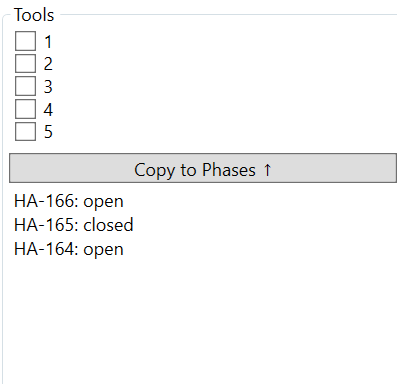
Check the Phases you want as destination, select in AutoCAD the Engineering Items you want to transfer, and press “Copy to Phases”.
Assume the following Process:
1 | 2 (active) | 3 | 4 | 5 | |
|---|---|---|---|---|---|
HA-164 | open | open | closed | open | closed |
HA-165 | closed | closed | closed | closed | open |
HA-166 | open | open | closed | open | open |
HA-167 | closed | closed | closed | open | open |
We select HA-164, HA-164, and HA-166 in Phase 2 (see selected in blue in the table above).
Then in the Status editor we check Phases 1 and 5 and press Copy to Phases:
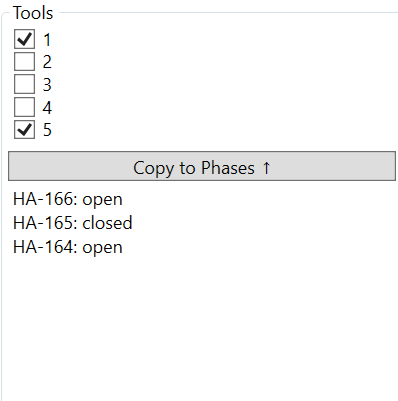
The result will have for the 3 valves the same state in Phase 1 and 5 as it was in 2
1 | 2 (active) | 3 | 4 | 5 | |
|---|---|---|---|---|---|
HA-164 | open | open | closed | open | open |
HA-165 | closed | closed | closed | closed | closed |
HA-166 | open | open | closed | open | open |
HA-167 | closed | closed | closed | open | open |
Copy and Paste
Enables you to save Statuses in a temporary buffer, and to apply them later after manually navigating to the destination Phase.

Selection is automatically shown
Press the “Copy” button to copy the statuses in the buffer:
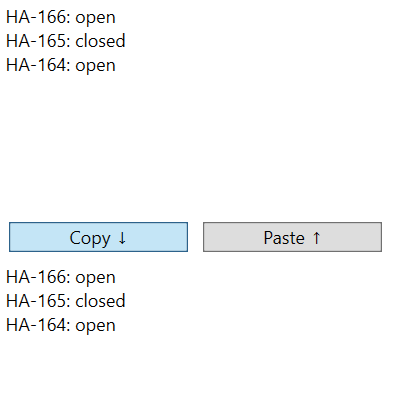
Navigate to any Phase, and make any selection in AutoCAD.
AseptSoft will show you how the pasting operation will affect each valve.
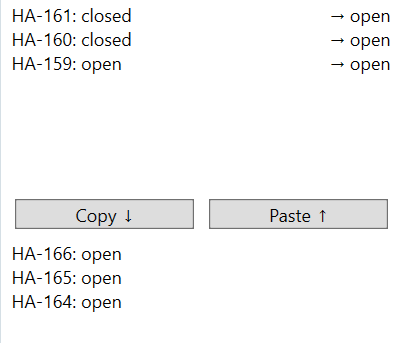
There are multiple scenarios for AseptSoft to paste:
One-State buffer
If only one State can be found in the buffer, when pasting that status will be applied to all the compatible Engineering Items.
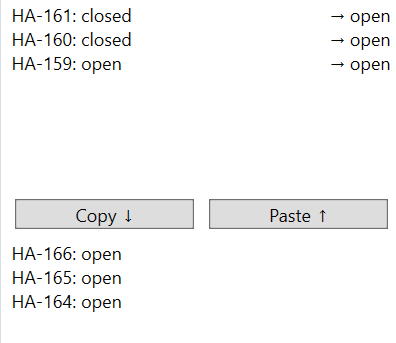
Same source as destination
If a valve is about to get pasted over, but it can be found within the copied buffer as well, it will ignore any other rule and paste the value that was earlier copied from her.
